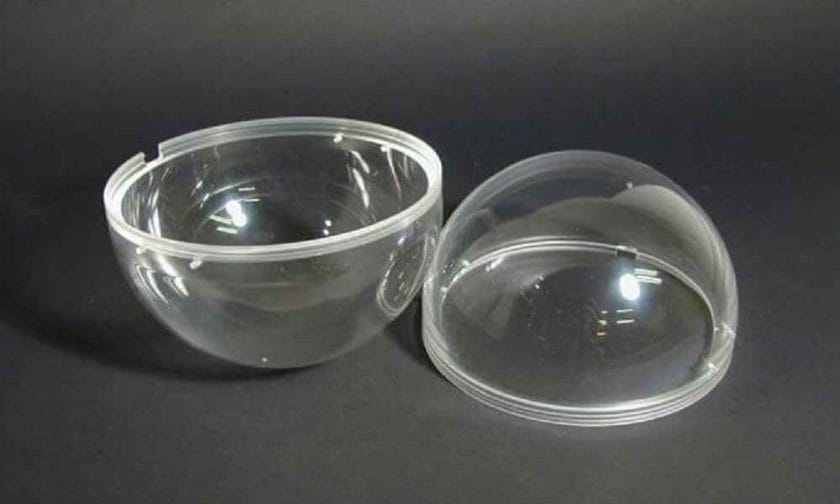Acrylic is a type of plastic that is commonly used in various applications due to its durability, transparency, and resistance to weathering and UV radiation.
Injection molding is a manufacturing process that involves injecting a melted plastic material into a mold and allowing it to cool and solidify into a desired shape.
This process is widely used in the production of plastic products, including those made from acrylic.
In this article, we will explore the properties of acrylic and its suitability for injection molding.
Properties of Acrylic
Acrylic is a thermoplastic material with several unique properties that make it suitable for a wide range of applications. Some of the key physical and chemical properties of acrylic are:
Physical Properties:
- Transparency: Acrylic has high light transmittance, making it a popular choice for transparent applications.
- Durability: Acrylic is known for its strength and resistance to impact and wear.
- Lightweight: Acrylic is lighter than glass, making it easier to handle and install in applications that require transparency.
Chemical Properties:
- Weather resistance: Acrylic is resistant to UV radiation and weathering, making it suitable for outdoor use.
- Chemical resistance: Acrylic is resistant to many common chemicals, including acids and bases.
- Easy to fabricate: Acrylic is easily fabricated, making it a popular choice for custom-made applications.
Advantages of Using Acrylic for Injection Molding
Acrylic has a number of advantages that make it a suitable material for injection molding, including:
- Cost-effectiveness: Acrylic is a cost-effective material compared to other plastics, making it a popular choice for budget-sensitive applications.
- Versatility: Acrylic can be molded into a variety of shapes and sizes, making it suitable for a wide range of applications.
- Durability: Acrylic is known for its strength and resistance to impact, making it a suitable material for products that will be subjected to wear and tear.
- Lightweightness: Acrylic is lighter than glass, making it easier to handle and install, especially in applications that require transparency.
Challenges of Using Acrylic for Injection Molding
While acrylic has many advantages, there are also some challenges that must be considered when using this material for injection molding, including:
- Shrinking: Acrylic is prone to shrinkage during the cooling process, which can result in dimensional inaccuracies.
- Warping: Acrylic can warp or deform during the molding process if not properly cooled and handled.
- Difficulties with cooling: Acrylic has a high thermal expansion coefficient, which can make it difficult to cool and solidify in the mold.
Preparation for Injection Molding Acrylic
To successfully injection mold acrylic parts, it is important to carefully prepare and consider the following factors:
Choose the Right Grade of Acrylic:
- The type of acrylic used for injection molding can impact the final quality and performance of the molded part.
- It is important to select a grade of acrylic that is suitable for the intended application and molding process.
Design the Mold:
- The mold design must take into account the properties of acrylic, including its tendency to shrink during cooling and its high thermal expansion coefficient.
- The mold should be designed with proper venting and adequate wall thickness to ensure even cooling and minimize warping.

Temperature and Pressure Settings:
- The temperature and pressure settings during the injection molding process must be carefully controlled to ensure that the acrylic material is melted and molded properly.
- The temperature and pressure settings may vary depending on the grade of acrylic used and the design of the mold.
Proper Drying of the Acrylic Material:
- Acrylic must be properly dried before it is used in the injection molding process.
- Improper drying can result in bubbles and other defects in the molded part.
Injection Molding Process for Acrylic
The injection molding process for acrylic can be broken down into the following steps:
Step by Step Explanation of the Process:
- The acrylic material is melted in the injection molding machine.
- The melted material is then injected into the mold under pressure.
- The mold is then closed and the acrylic is allowed to cool and solidify.
- The mold is opened and the molded part is ejected.
Injection Speed and Pressure:
- The injection speed and pressure must be carefully controlled to ensure that the melted acrylic is evenly distributed in the mold and to minimize defects.
Ejection of the Molded Part:
- The molded part must be ejected from the mold without damaging the part or the mold.
- Proper ejection methods, such as using ejector pins, must be used to prevent damage.
Post-Processing and Finishing:
- The molded part may require additional post-processing and finishing, such as trimming, sanding, and polishing.
- The post-processing and finishing steps will depend on the intended use of the molded part and the desired finish.

Conclusion
Injection molding is a widely used process for producing plastic parts, including those made from acrylic.
Acrylic has a number of advantages, including its cost-effectiveness, versatility, durability, and lightweight, that make it a suitable material for injection molding.
However, there are also some challenges, such as shrinkage, warping, and difficulties with cooling, that must be considered when using acrylic for injection molding.
Proper preparation and careful control of the injection molding process can help to minimize these challenges and produce high-quality acrylic parts.
